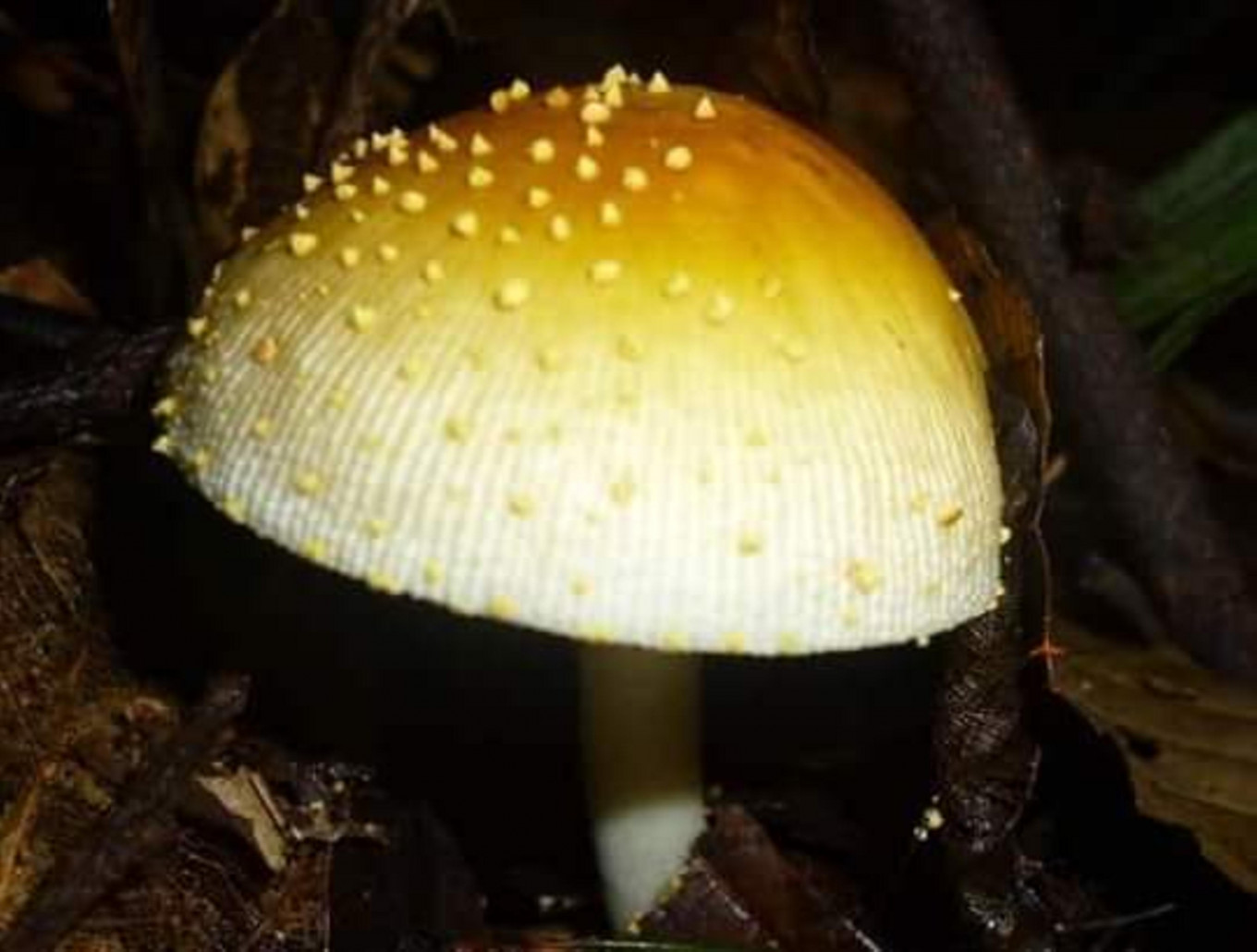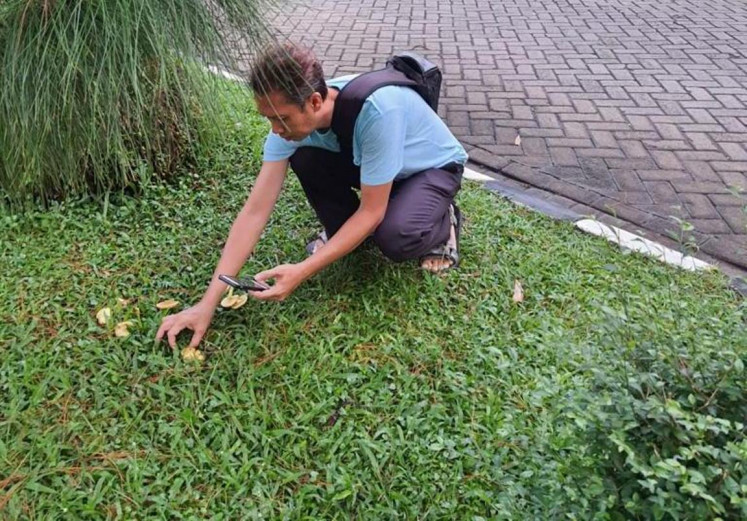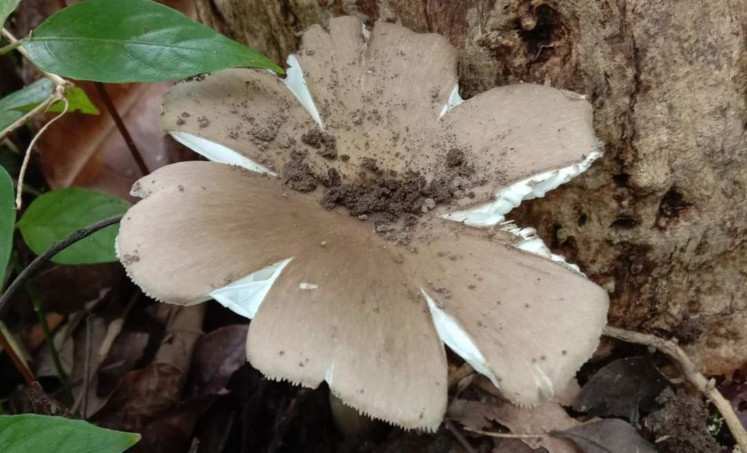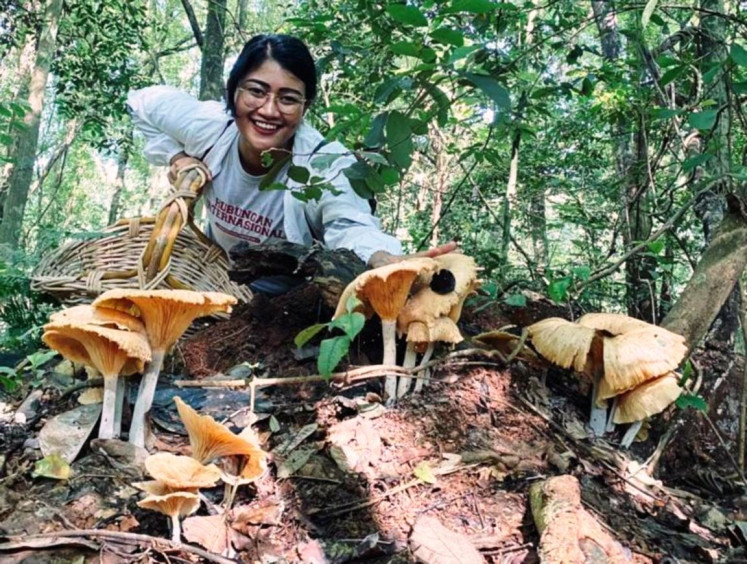Popular Reads
Top Results
Can't find what you're looking for?
View all search resultsPopular Reads
Top Results
Can't find what you're looking for?
View all search resultsThe Indonesians who hunt for wild mushrooms
Change text size
Gift Premium Articles
to Anyone
Mushroom enthusiasts share the fun and tips on hunting wild, edible mushrooms.
Before the pandemic, Aisha Kusumasomantri used to go trekking. The unprecedented situation drove her to find a new outdoor activity while social distancing and she started mushroom hunting in various city forests in Greater Jakarta.
“I never knew before that there was a mushroom hunter group. I looked it up online and found Komunitas Pemburu Jamur Indonesia [Indonesian Mushroom Hunters Community, usually abbreviated as KPJI] on Facebook," she said.
The 30-year-old’s interest in mushrooms was influenced by her parents, who used to go on hunts when they resided in Germany.
“My parents bought me mushroom hunting guides and I tried to memorize [the different types of mushrooms]. At first, I was attracted to mushrooms because they came in so many shapes and colors," said Aisha, a lecturer at the School of Social and Political Science at the University of Indonesia (FISIP UI).
"To me, mushrooms are mysterious as they are neither animals or plants, yet they exist among us," she added.
Ferry Augustinus has also made the most of his spare time since the beginning of the pandemic by hunting for mushrooms in a city forest in Semarang, Central Java. The 45-year-old biology graduate has been fond of mushrooms since he was a student.
“At first, I thought there were no mushrooms [in the city forest]. After some exploring, I found a lot of mushrooms growing there. I collect and document them, and post the pictures on a Facebook group,” said Ferry, who works as a freelance teacher.
Mushroom hunting: Ferry Augustinus went mushroom foraging in a residential area in Sukaraja, Bogor, West Java. (Courtesy of Ferry Augustinus) (Personal Collection/Courtesy by Ferry Augustinus)Abundant but understudied
The KPJI originally started as a discussion forum for members of the Pathology Group, a subgroup of the Tree Grower Community — a student organization at the Silviculture department, the School of Forestry and Environment, IPB University. Founded in 2014 by Khalid Hafazallah, the mushroom hunters community currently has 29,000 members.
Khalid’s passion for mushrooms started in 2013 when he did field research in Ketapang, West Kalimantan, to complete his undergraduate thesis.
“My research was actually about plants, not fungi. But whenever I spent time in the forest, I explored [other things]. I took pictures of mushrooms because they had unique shapes,” he said.
In 2017, The National Research and Innovation Agency’s (BRIN) Research Center for Biology recorded 2,273 species of mushrooms in Indonesia. As mushrooms have not been studied enough, Ferry and another member of KPJI decided to do their own research.
Together with IPB University lecturer and mycologist Ivan Permana Putra, Ferry has written a journal article titled Catatan tambahan keberadaan Strobilomyces di Indonesia (Additional notes on the presence of Strobilomyces in Indonesia). They also wrote Termitomyces di kawasan urban kecamatan Gunungpati, Kota Semarang, Jawa Tengah (Termitomyces in urban areas, Gunungpati District, Semarang City, Central Java) and Keragaman dan potensi jamur di hutan Kota Semarang, Jawa Tengah (Diversity and potency of macrofungi in the city forest of Semarang, Central Java).
Ferry acknowledged that mycology was continuously changing.
“Before joining the group, I already had a basic knowledge of mushroom identification [from my time as a college student]. But the skill I obtained was only limited to [science] developments in the 1990s. It has changed a lot,” he said.
"[For example], there have been changes in nomenclature for some mushroom species. So, when it comes to identification, this community helps me a lot.”
Mushrooms are easy to find in many places in Indonesia. However, compared with other countries, many have not been widely marketed.
“In European forests, there are edible mycorrhizal mushrooms that have been commercialized. There are countries that can harvest up to several tons of them. No one is capable of doing this in Indonesia," said Khalid, who works as a forestry consultant.
Termitomyces, often called the termite mushroom because it is grown by termites, is one of the innumerable edible mushrooms in Indonesia. Nevertheless, nobody has successfully cultivated and commercialized it.
“There are people who have tried to cultivate it, but to no avail,” Khalid said.
Do’s and don’ts
Even though a large number of mushroom species are available throughout the year, the best time to pick them is on a hot day after plenty of rain.
“Mushrooms may spring up in the morning and disappear in the afternoon. If we are diligent in exploring them, we will know their characteristics and when they appear,” said Ferry.
To hunt mushrooms, people do not need a lot of tools. A knife is enough for foraging.
“A knife is used to pry the mushroom’s pseudorhiza [root-like structure]. Some subfamilies of mushrooms have pseudorhiza buried below the soil surface. We have to look beneath [the surface] to identify them,“ said Aisha, adding that mushroom hunters should not forget to apply mosquito repellent and put on protective clothing such as a thin coat and wear boots.
Fungi enthusiast: Aisha Kusumasomantri posed with mushrooms in a forest. Her interest in mushrooms was heavily influenced by her parents. (Courtesy by Aisha Kusumasomantri) (Personal Collection/Courtesy by Aisha Kusumasomantri)She emphasized that sustainable and responsible mushroom foraging was essential.
“We should not take more than we need. Whenever I go hunting, I leave some mushrooms behind,” said Aisha, who picks mushrooms for eating.
A rattan basket is also important for mushroom collecting.
“Baskets made from rattan can help disperse the mushroom spores through their holes as we walk. As the spores fall to the ground, the mushrooms will not stop reproducing,” Aisha said.
Khalid noted that it was crucial to have knowledge on identifying mushrooms and the environmental condition of locations where they flourish.
"Many edible mushrooms can be poisonous if they grow in a place contaminated with toxic waste,” he said.
Moreover, there are species of mushrooms that are similar to the edible ones, but they are poisonous.
“For example, a poisonous mushroom called Trogia venenata looks like an oyster mushroom,” added Khalid.
Aisha said it is not easy to distinguish between various types of mushrooms.
“It takes a long time to be able to identify [mushroom varieties]. Many mushrooms are very similar in appearance. So, we have to be meticulous when observing them.”














